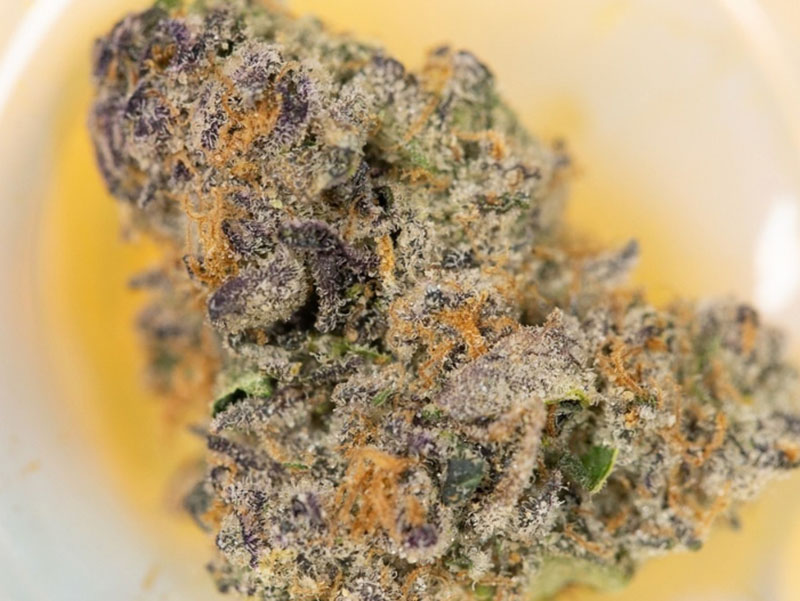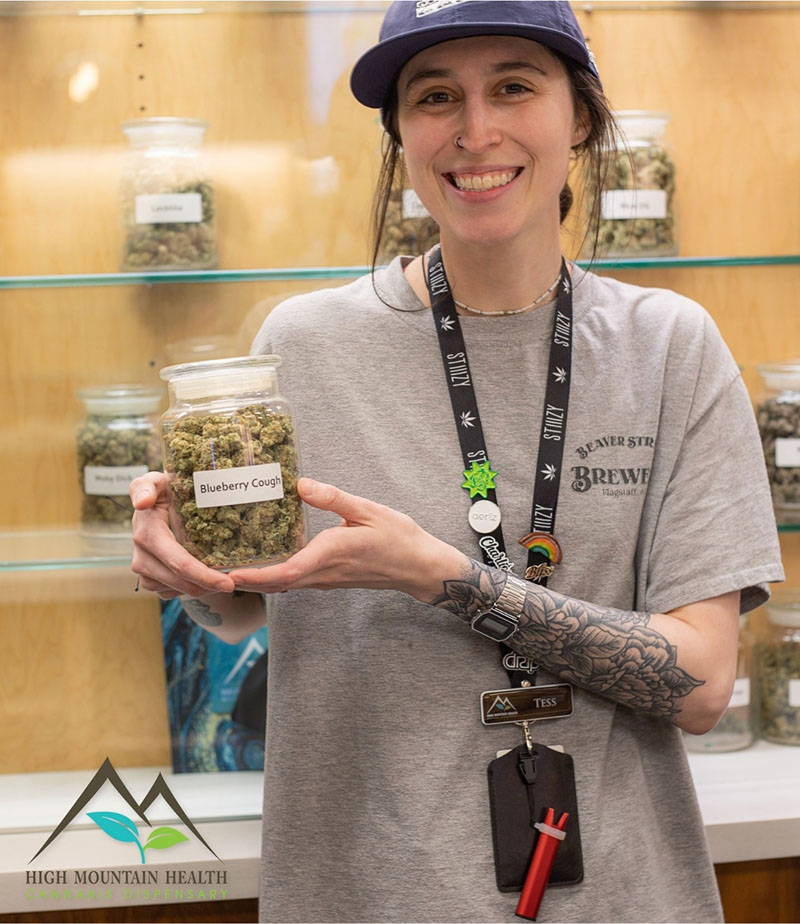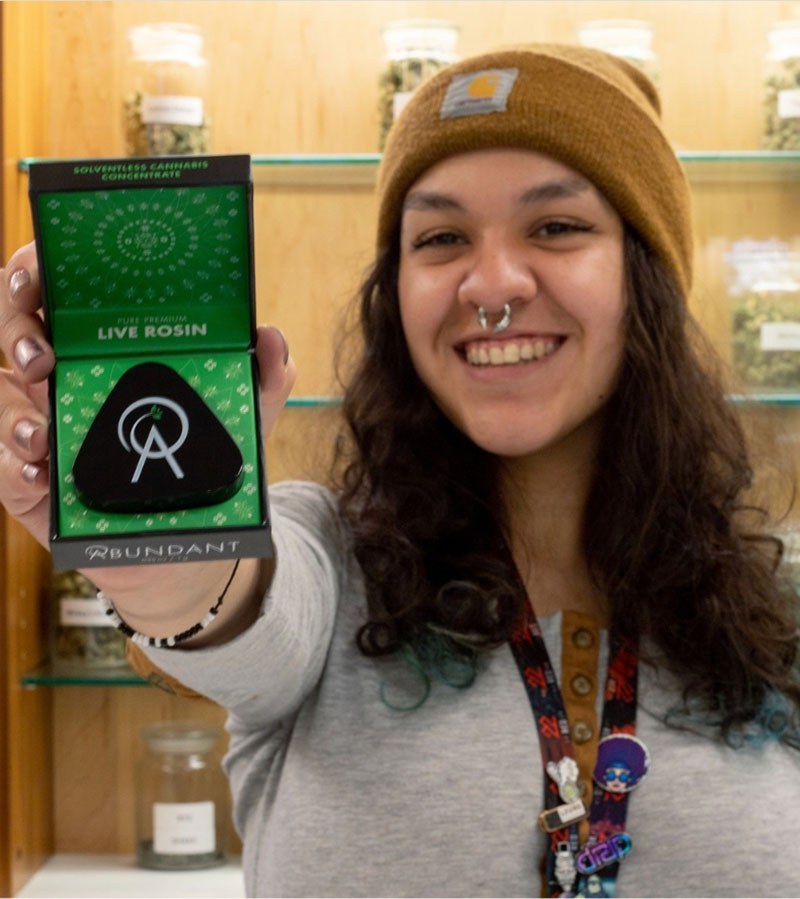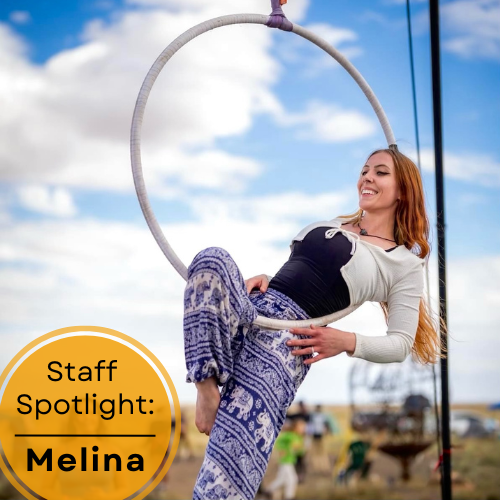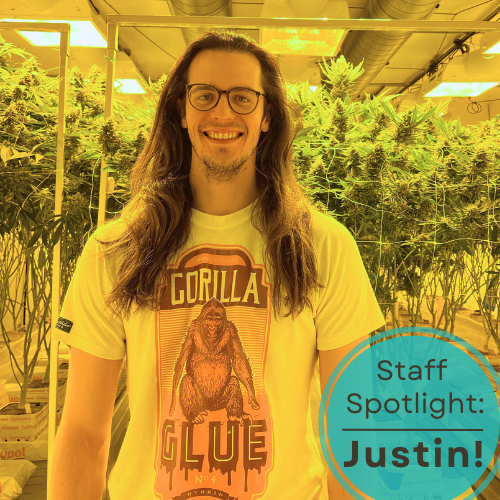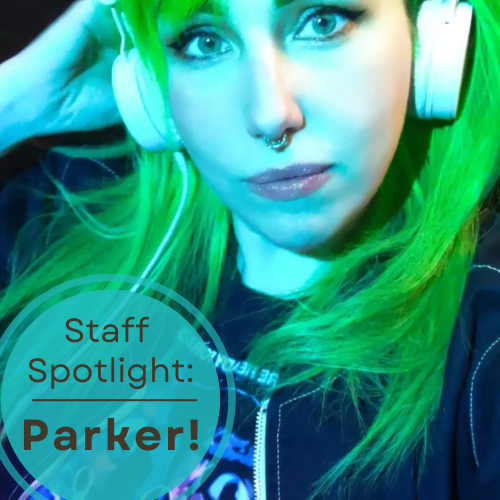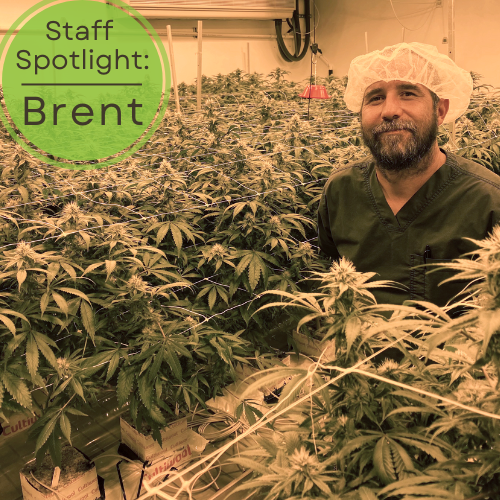Uplifting Strains
By Zachariah Finning
Cannabis in and of its own can be associated with the relief of over 25 common and impacting ailments. People use it for everything from a substitute to having a drink, to daily pain relief, from appetite stimulation to sleep remedy. The wide variety of conditions that seemed to be eased by cannabis ingestion is why the medicinal field arose in the first place. For some there is a true medicinal need for the plant; science both anecdotal and research-based have proved the healing properties of cannabis time and time again. September is National Suicide Awareness month. The effect of just one suicide reaches many more people than we think and yet it remains a taboo subject within our society. Could specific strains of cannabis help to combat depression, stress, anxiety, or any other of the multitude of mental factors that can lead to the horrible tragedy of suicide? In this month's blog, we will take a brief look at some of the sad statistics surrounding suicide and the mental factors that play into it. In doing so vocalizing for the de-stigmatization of one of the most awful outcomes of mental health problems in this country. We will then shift our focus onto some cannabis strains that have been known to help with a variety of these mental factors and take a glance at the terpenes that are primarily responsible for giving the strains their effects.
There is a deep prevalence of suicide within the U.S. It is seldom talked about and when the action manifests itself, we feel as if the individual lost and the immediate family is one in a million. The sadder truth is that here in the U.S. suicide takes place a lot more common than we would like to admit. We like to talk about it even less and that could be a part of the bigger problem. According to the National Institute of Mental Health “Suicide is among the leading causes of death in the United States”. This is based on recent mortality data showing rises in suicide rates of certain populations (S1). On average, which has been adjusted for age, the annual suicide rate of the U.S. increased 24% between the years 1999 and 2014 (S2). That is almost 25% within 15 years! The rise has only continued with time. Reaching from 2018 statistics it had increased a total of 35.2% from 1999 (S1). 2019 saw suicide as the tenth leading cause of death in the United States taking the lives of over 47,500 people (S1). That year alone the U.S. had almost two and a half as many deaths by suicide as there was by Homicide; 47,511 Vs 19,141 (S2). When you look at the numbers it is almost incomprehensible. In the U.S. you are almost 2 times more likely to take your own life than to have it taken by another individual. The final act of suicide must be first sought out by the mind through suicidal thoughts and idealization. In 2019 it was reported that 12 million adults, between the ages of 18 and older, reported having thoughts of suicide (S1). 1.4 million adult Americans physically attempted suicide that same year (S1). To truly respect and understand these numbers we must also come to know what may put an individual at risk to the progression of suicidal thoughts and plans.
In today’s society suicide like many other aspects of failing mental health is ostracized. It is thought of as sordid. In other words; thought of as a bad attribute, faulty wiring, something inevitable or uncurable in certain individuals. That outlook only helps to further stigmatize the action. It can also negate the many mental states or individual risks at play in a person who is having suicidal thoughts. Doctors and therapists alike believe it is always a combination of many factors and scenarios that ultimately lead an individual to take their own life (S3). A mix of mental health disorders along with the right persons, places, events, and experiences taking place that push someone over the thin edge between idealizing and actively planning suicide. The most common mental health disorders diagnosed in suicide victims would be severe long-term depression (diagnosed or unchecked) and long-term substance abuse disorder (again diagnosed or unchecked) (S4). These two disorders when left unchecked can leave a person feeling lost and hopeless as well as stuck in certain mental patterns. Mix those with anxiety, high daily stress, and some financial issues and the drastic toll of these issues can manifest into something like suicide or other mental breakdowns. Serious barriers to adequate and affordable mental healthcare are another daunting issue to combating suicide here in the U.S (S5). Too many Americans put their mental health on the back-burner due to a multitude of reasons. On the other side of the coin, there are always factors outside of mental health that play a part in suicide. Individually they range from pending criminal and legal problems to job loss or severe financial struggle, impulsive tendencies, and even prolonged social isolation (S3). There are always adverse experiences to attribute like child abuse, sexual and or physical violence. As well as severe bullying and demeaning acts (S3). Interpersonally many things can lead to suicidal thoughts ranging from the unseen dissolution of a serious relationship to physical and sexual abuse in active relationships. Even long-lasting familial disputes can stoke the fire (S3). Societally, cultural, and sometimes even deep religious beliefs help to promote the stigmatizing view of seeking help for mental health disorders. This further alienates someone who could be looking for a reason to live (S3). With little or no access to reliable and truly affordable mental healthcare to a majority of the country along with so many aspects of daily life contributing to suicidal tendencies, it is no wonder that we have a problem here in the U.S.
There is no better substitute for improving your mental health than to seek help from a licensed professional. However, in today's America -even with insurance- a visit with a registered psychologist, psychiatrist, or therapist can cost you anywhere from $80 to $120 dollars a visit. Without insurance, you could be spending upwards of three hundred per visit. Visits usually last about an hour at most and let’s be honest when we vent to our friends who aren't paid to deal with our problems it's usually a good two hours or more. The cost of access to good mental healthcare alone has forced many Americans to deal with their mental themselves. Seeking holistic forms of mental healthcare as alternatives to therapy sessions and medications that may be prescribed by a psychologist or psychiatrist. Many have started talking to friends more openly and honestly, not being ashamed of their mental health struggles or problems when they arise in conversation. Having true support within your circle means you are less likely to self-isolate and allow yourself to spiral in a mindset that could lead to suicidal thoughts. Regardless of support from others, we all need our own ways of distressing and taking the edge off after hard days. Being able to pause from daily activities and stressors allows us to take back control of our lives, our minds, and lets us enjoy the present moment. Cannabis has always been big among social settings of peace and inclusiveness. Certain strains of cannabis have been known to enhance and even improve our sense of happiness and belonging both in social settings and by ourselves. Science and anecdotal evidence have shown us time and again that cannabis has its purpose as a medicinal plant. Not only does cannabis contain THC responsible for the “high” and euphoria many seek to escape their mental afflictions but cannabis also contains organic terpenes which play a more fundamental role in the characteristics of any strain.
As previously mentioned, Depression is one of the leading attributing mental factors responsible for Suicide along with substance abuse. It is easy to look at cannabis and say “it is just another drug” but when used medicinally, and in a responsible manner, it has proven to be just as effective for some conditions as over-the-counter medications. Veterans have even used it in lieu of some of their pain medications prescribed more recently in the past years. Depression is a very complex disorder but cannabis is also one of nature’s most complex plants. Regardless of complexity, some individuals do purport that cannabis assists them with managing depression (S6). For some individuals, certain cannabis strains “imbue the mind with an elevated sense of engagement and motivation” (S6). Breaking the cycle of feeling stuck or powerless in situations. Other strains may even stimulate hunger assisting with the extreme appetite loss that is common with depression. Some cannabis may even enhance libido and lower social anxiety which could boost conversation with friends and or family as well as stimulate creativity in hobbies or passions (S6). While it is in agreement that one should communicate with their medical professional on how to determine if cannabis may counter interact with current medication or treatments it is worthwhile looking into some specific strains that have been claimed to relieve the major symptoms of depression. Without further ado let's look at these uplifting breeds of cannabis.
The first major component of cannabis to provide some relief in this domain would be THC, the main cannabinoid in cannabis that produces the euphoric, or happy, high known to come from marijuana. The second and lesser-known component that would provide relief from depressive or suicidal tendencies would be terpenes. Terpenes are organic hydro-compounds that give every strain of cannabis their distinct properties. It is the combination of THC content along with the mixture of correct terpene values that will provide the most comforting relief from depressive thoughts. Our first strain up to bat is the well-known Jack Herer. Jack Herer is a THC-dominant sativa-based strain whose genetics hail from the Netherlands sometime around the mid-1990s. Jack Herer is cherished for its ability to inspire happiness and creativity in users. It has also been claimed to increase motivation on really hard days (S6). Primary terpenes in Jack Herer would be Terpinolene, Caryophyllene, and Pinene (S6). In this strain, the two most active terpenes combating depressive episodes would be Caryophyllene and Pinene. Pinene has been known to have an energy-boosting effect while Caryophyllene has shown anti-depressant properties (S7). Another great cannabis aid in the relief from depressive tendencies would be our very own Harlequin. Harlequin is a CBD heavy sativa-based strain, a long descended relative to the famous Colombian Gold and Thai landrace strains, exact dates of the birth of this lineage are hard to come by (S6). What makes this strain so special in today’s blog would be the high levels of CBD found in its’ buds along with its’ terpene makeup. Harlequin’s high levels of CBD and low levels of THC make the strain great for counteracting anxiety or paranoia. Primary terpenes found in Harlequin would be Myrcene, Pinene, and Caryophyllene. The Caryophyllene will provide the anti-depressant properties while the heavy traces of Myrcene will leave a profound sense of relaxation and euphoria combating anxiety-driven thought patterns (S6 & S7). The last runner-up will help us with those late nights; Blackberry Kush is a THC-dominant indica hybrid strain. Myrcene, Limonene, and Caryophyllene are the primary terpenes that make up the heavy feeling of BBK. Myrcene will provide relaxation and euphoria while Limonene gives an uplifting feel with anti-anxiety & anti-depressant properties (S7). The mixture of THC along with these two terpenes should lull one into a warm sense of relaxation and tranquility that is perfect for a deep night's sleep. I don't know anyone that can say that they aren’t better off after a full night's rest.
It is more than evident that the problem of suicide in the U.S, and around the world, is truly a multi-faceted issue. It requires us to face and tackle things like affordable access to mental health care, the de-stigmatization of mental health and help-seeking in general, as well as finding alternatives to over-prescribed medications from mental health practitioners when they may not be working. It also forces us to look at the societal truth that sometimes life, as we have made it, is not that easily tackled and managed by everyone. We all need different levels of self-care, support, and mediation so it makes sense that we may not all need the same forms of medication? Medicinal Marijuana is still in its infancy as it pertains to it uses in mental health but there is promising evidence found in terpenes, cannabinoids, and anecdotal patient rapport that suggests this plant does have its place in the discussion. As time inevitably marches forward, we can only hope that more effort and research will be spent on the medicinal values of terpenes and their effects on the human psyche when combined with THC, CBD, and other cannabinoids. Wouldn’t it be something to have your psychiatrist offer you a prescription of naturally grown Harlequin to assist with your daily anxiety issues instead of a bottle of generic Lorazepam?
Sources
S1 https://www.nimh.nih.gov/health/statistics/suicide
S2 https://www.nytimes.com/2013/05/03/health/suicide-rate-rises-sharply-in-us.html?_r=0
S3 https://www.cdc.gov/suicide/factors/index.html
S4 https://www.ncbi.nlm.nih.gov/pmc/articles/PMC6165520/
S5 https://www.ncbi.nlm.nih.gov/books/NBK220944/
S6 https://www.leafly.com/news/strains-products/best-cannabis-strains-for-depression
S7 https://thcdesign.com/blog/its-all-about-the-terpenes/

